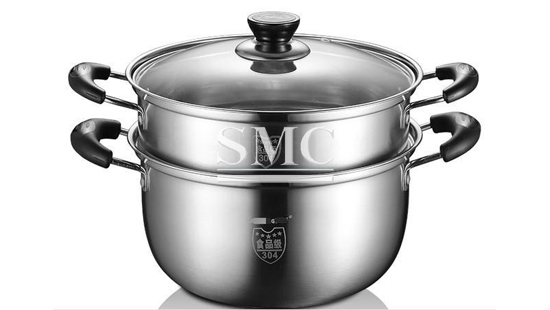People eat food for the day, and most of our cookware are stainless steel, such as steamers, kettles, mugs, dishes, plates, etc. As everyone’s awareness of food safety increases, more and more people will pay special attention to food grade 304 stainless steel when choosing stainless steel tableware.
SUS304 refers to 304 stainless steel. SUS is a Japanese material standard, and 304 stainless steel is a grade of stainless steel produced according to the American ASTM standard. 304 is equivalent to China’s 06Cr19Ni10 stainless steel, and Japan also cites the name of the United States, which is called: SUS304. China’s stainless steel grades are named directly by numbers plus the main chemical elements contained in stainless steel: for example, 06Cr19Ni10 is required to achieve 19% chromium content and 10% nickel content, and 06 represents the carbon content. The American standard corresponding to this grade is 304. The American Society for Testing and Materials stipulates that 304 has at least 8% nickel and 18% chromium.

Food grade stainless steel refers to the stainless steel material that meets the requirements of the National Standard of the People’s Republic of China / Sanitary Standard for Stainless Steel Food Containers, GB4806.9-2016, and its lead content is much lower than that of ordinary stainless steel.
Food grade stainless steel refers to the part of food machinery that comes into contact with food and must meet certain food safety requirements. Because the food production process uses a lot of acid and alkali, and stainless steel contains chromium, unqualified stainless steel, will dissolve various price of chromium, toxic; and it is required to limit the content of various alloy impurity elements such as lead and cadmium.
It should be noted that it is not necessary for 304 to meet the standard. Some stainless steel tableware such as 201 has a high manganese content, which belongs to Gao Meng Steel. However, when the relevant institutions detected the migration of heavy metals, it was found that it was not certain that manganese was detected. Heavy metal migration, therefore, some non-304 stainless steel vessels are insufficient in chromium and nickel, and have poor corrosion resistance, but they are in line with national standards and are also food grade stainless steel. So we can draw this conclusion: food grade stainless steel is not equal to 304 stainless steel! But don’t you say you don’t have to choose 304 stainless steel? Of course not, 304 stainless steel has less manganese content, more chromium and nickel content, and strong corrosion resistance. Therefore, many people think that it is safer to choose food grade 304/316 stainless steel!
Shanghai Metal Corporation is a trusted aluminum alloy, aluminum foil price, stainless steel price and stainless steel manufacturer, kinds of stainless steel in china.
For our full list of products that we offer check out our website here. Be sure to join the conversation in our LinkedIn group, Facebook, Twitter .
Try also our WeChat by scanning the QR code below.
Hales H.//SMC Editor

Guest contributors are welcome at the Alloy Wiki.It is a weekly wiki and guide on alloy information and processing technology, while also about the vast array of opportunities that are present in manufacturing. Our team of writers consists of a Machining Material Supplier / Machinist / Tool and Die Maker, a Biomedical Engineer / Product Development Engineer, a Job Development Coordinator / Adjunct Professor, and a President and CEO of a manufacturing facility.
Link to this article:What is Food Grade Stainless Steel?
Reprint Statement: If there are no special instructions, all articles on this site are original. Please indicate the source for reprinting:Alloy Wiki,thanks!^^


